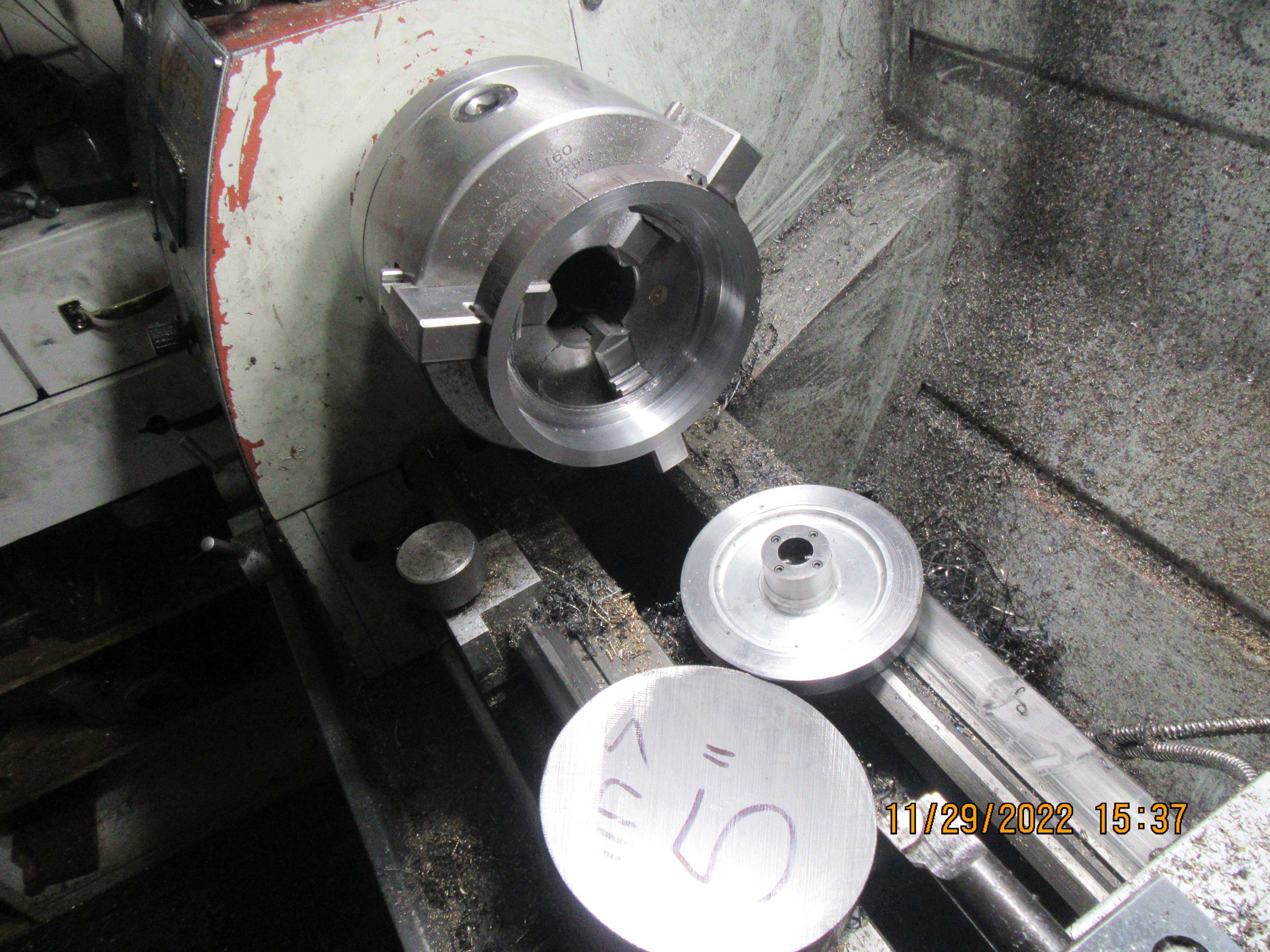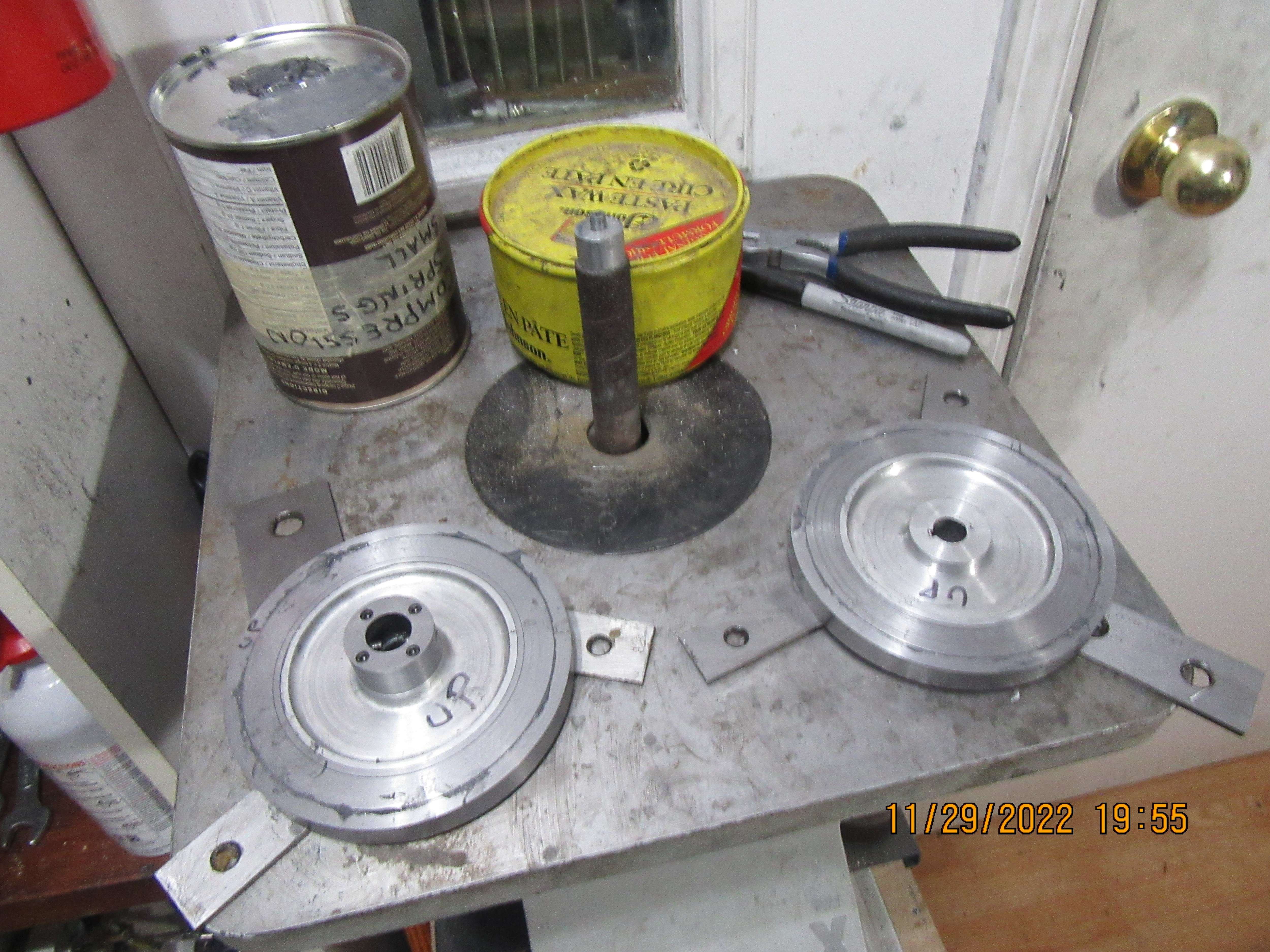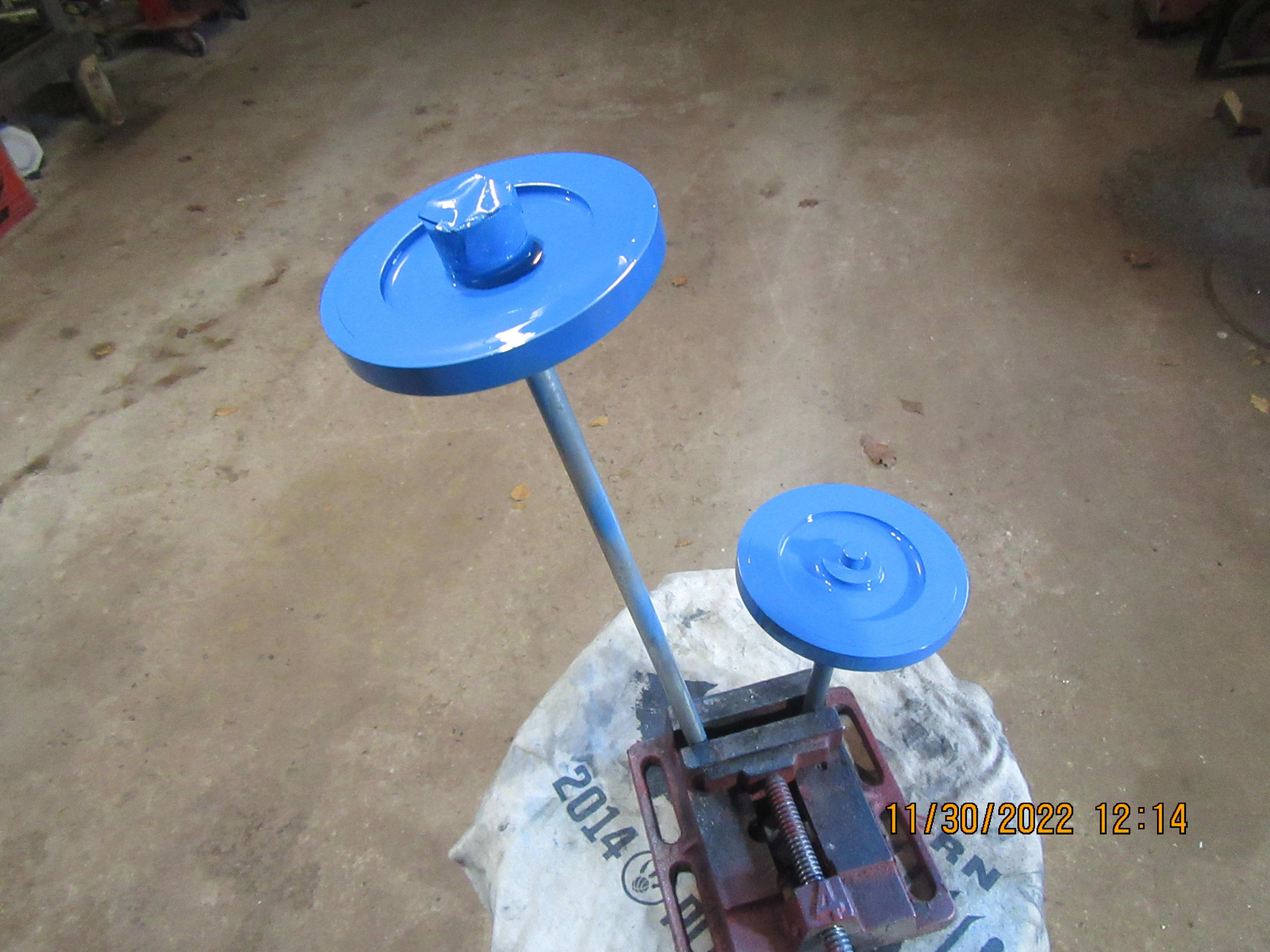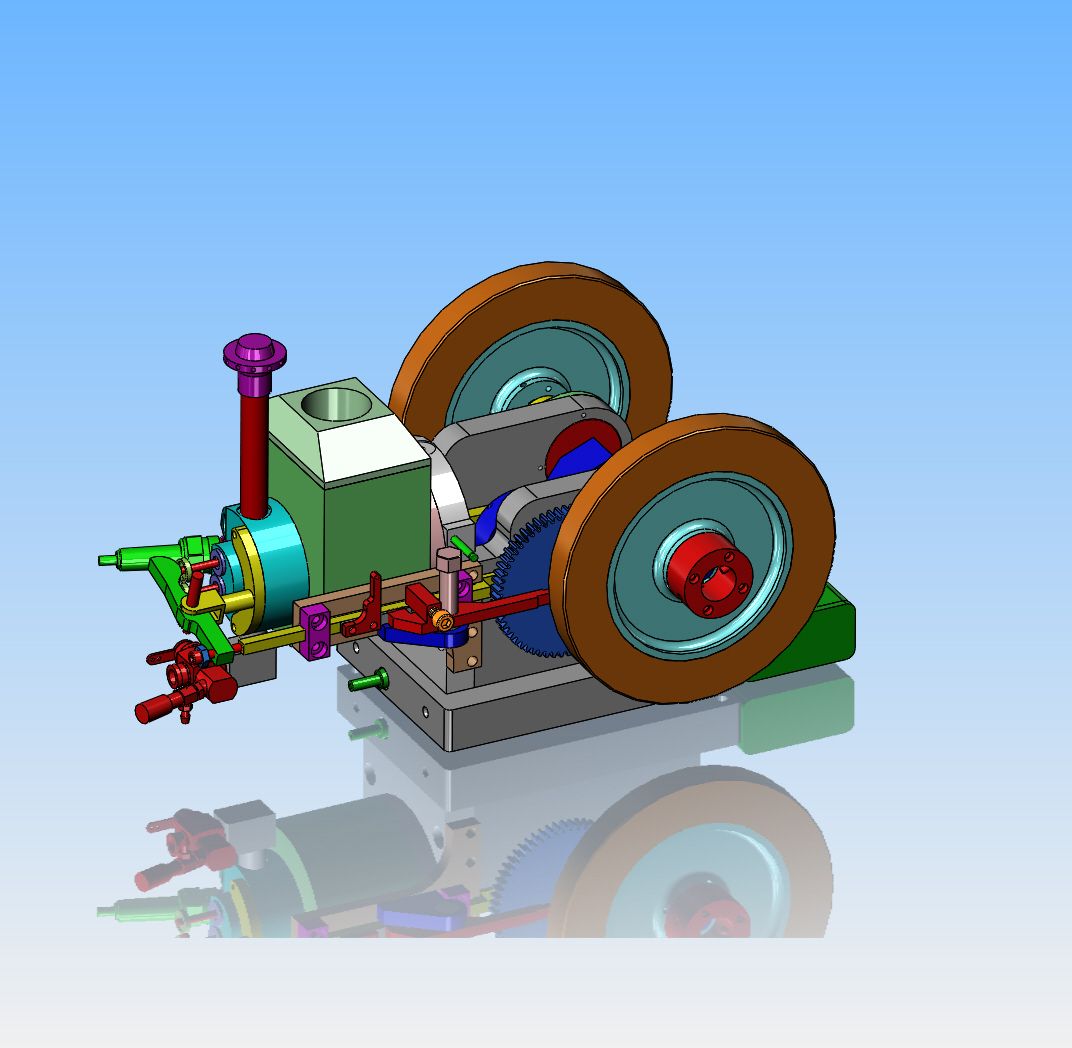Okay---I'm happy. After a full day of trying to get good runs and failing, as a last resort I stole a flywheel off another engine and added it onto the crankshaft.--Engine immediately started up and ran until it was out of gas. Big Daddy who suggested heavier flywheels---You were absolutely right.
You are using an out of date browser. It may not display this or other websites correctly.
You should upgrade or use an alternative browser.
You should upgrade or use an alternative browser.
Time for a new Horizontal Hit and Miss engine
- Thread starter Brian Rupnow
- Start date

Help Support Home Model Engine Machinist Forum:
This site may earn a commission from merchant affiliate
links, including eBay, Amazon, and others.
Is the hit and miss operation working as you want? I can't discern any hit and miss action listening to and watching it.
As per the written comments part of the video, no, the hit and miss lever is not hooked up. You have to have these engines tuned almost perfectly before you even think about having them hit and miss. Sparky--you're right---That is a commercial, throttled carb currently on the engine. I have been on a three day quest to get this engine to make consistent runs. The commercial carb is probably temporary--it just removes one more engine component that might be suspect. (Although hit and miss engines will work perfectly fine with a throttled carburetor that is set to "wide open throttle"). Now that I have finally reached a point where I know that the engine needs heavier flywheels, I will modify the flywheels to be heavier, then see about having the engine slow down. There are more than a dozen things that will keep an engine from running consistently, and they are not all readily apparent. All I can do is work my way thru each thing and see if it makes a difference on how well the engine works. Honestly, I was running out of things to check when I tried adding the extra flywheel.
Today, I'm adding to the outside diameter of my flywheels. Unfortunately, no one in town had 5" double extra strong pipe which would only have required a bit of machining. So, for the princely sum of $17 I bought two 3/4" lengths of 5" diameter solid. My largest drill is 1" diameter, so I've just spent two hours machining one of them for a precision fit over the o.d. of a flywheel. one down, one to go. The deepest depth of cut I can take is 0.025", so I'm taking out 0.050" of material with each cut. I have to remove about 3/12" of steel after I have used my 1" drill. I think that adds up to about four billion passes with the boring tool--at least my wrist says so. I'd like to get them both finished today and coat the insides with J.B. Weld and mount the rings on the flywheels so they can set up overnight.


- Joined
- Jan 4, 2011
- Messages
- 1,444
- Reaction score
- 406
Why not just make new flywheels from the blanks even if you had to bolt on the hubs?

$45.99
Sunnytech Mini Hot Air Stirling Engine Motor Model Educational Toy Kits Electricity HA001
stirlingtechonline

$171.00
$190.00
Genmitsu CNC 3018-PRO Router Kit GRBL Control 3 Axis Plastic Acrylic PCB PVC Wood Carving Milling Engraving Machine, XYZ Working Area 300x180x45mm
SainSmart Official

$49.95
$55.99
DjuiinoStar Hot Air Stirling Engine Assembly Kit: Spend 30 Minutes to Build Your Own Stirling Engine
djuiinostar
![DreamPlan Home Design and Landscaping Software Free for Windows [PC Download]](https://m.media-amazon.com/images/I/51kvZH2dVLL._SL500_.jpg)
$0.00
DreamPlan Home Design and Landscaping Software Free for Windows [PC Download]
Amazon.com Services LLC

$37.38
$49.99
Becker CAD 12 3D - professional CAD software for 2D + 3D design and modelling - for 3 PCs - 100% compatible with AutoCAD
momox Shop

$19.15
$29.95
Competition Engine Building: Advanced Engine Design and Assembly Techniques (Pro Series)
MBC Inc.

$599.00
$649.00
FoxAlien Masuter Pro CNC Router Machine, Upgraded 3-Axis Engraving All-Metal Milling Machine for Wood Acrylic MDF Nylon Carving Cutting
FoxAlien Official

$99.99
AHS Outdoor Wood Boiler Yearly Maintenance Kit with Water Treatment - ProTech 300 & Test Kit
Alternative Heating & Supplies

$26.89
$34.99
Peachtree Woodworking Supply Bowl Sander Tool Kit w/Dual Bearing Head & Hardwood Handle, 42 Pieces Wood Sander Set, 2 Hook & Loop Sanding Disc Sandpaper Assortment, 1/4 Mandrel Bowl Sander
Peachtree Woodworking Supply Inc
I'm done!!! Started at 12:00 worked till 7:20, had a half hour off to grab some lunch. There are three or four ways this job could have been done. I chose the way that I thought might be less work. Any of the other ways suggested would have worked just as good, and probably would have worked out the same time-wise. I wanted to finish today so the J.B. Weld could set up overnight. Now I'm off to watch Jeopardy with my good wife.


Nobody knows but you and me---and we're not going to say a word--are we!!!


Not a great deal accomplished today, but my flywheels are modified and painted and ready to go back onto the engine tomorrow. I've spent a goodly portion of my afternoon watching videos posted by Andrew Whale of the United Kingdom, as he builds the Jerry Howell Farm Boy engine. If, in a worst case situation my engine doesn't work as expected with the style of governor I am using, it would be a relatively easy thing to change it to the same style of governor as the Farm boy uses. I don't want to do that--I have already built the Kerzel engine, the Philip Duclos "Odds and Ends" engine and the Duclos "Whatzit" engine using the sliding sleeve on the crankshaft, and I want to do something different.
After adding a bit of weight to my flywheels, the engine is running fine. I swapped out a couple of different springs in the hit and miss mechanism, then found the right one. The engine is running and going in and out of hit and miss mode on its own now. I will slow things down a bit and do a bit of "finessing", but overall I am very pleased. This engine is built entirely of bar stock, no castings. I sell a complete set of engineering drawings for $25 Canadian. If you wish to buy a plan set (about 50 drawings) please contact me at [email protected] The desk which I have the engine clamped to right now is very noisy, and all of the other things on it are bouncing around adding to the noise. On a solid base, the engine is much quieter than you are hearing on the video.---Brian Rupnow
I must say, I'm "Over the moon" right now. It always puts me on a big high whenever a new engine runs satisfactorily. When it is a new engine with a new, untried hit and miss mechanism, then the effect is doubled. The engineer part of me says "Of course it will work!!"--It's all logic. The other part of me that has built over 40 engines says "Yes, in theory it should run, but I've built things in the past that worked great in theory, but I was never able to get them running in the "real world". I've ordered an oiler from Ebay, and I still may do a bit more painting. Now I have to go back over the engineering drawings, make any changes that didn't get recorded, and save the drawings as .pdf files so that people without specialized Software programs are able to open them ---Brian
Sparky---Read the text in post #231
I just added up the number of detail and assembly drawings, and there are 46 drawings, and some of them are multiple sheet drawings so probably about 55 sheets overall. At this time, all of the machining is finished. The next trick will be to find a spring for the hit and miss lever that is weak enough to let the engine go into "miss" cycle at a lower rpm., but strong enough to move the hit and miss lever back into the "run" position before the engine quits at the end of the miss cycle. This is a rather delicate balance. A "normal" 4 cycle single cylinder gas engine will idle at about 1000 rpm. A hit and miss engine when working properly, will average about 600 rpm. because the engine rpm is slowing down during each rotation of the crankshaft during the "miss" part of the cycle.
JohnBDownunder
Well-Known Member
- Joined
- Mar 1, 2012
- Messages
- 113
- Reaction score
- 36
Thank you Brian for a great read-along post. I find it always worth following your posts and really like the current running video. I do agree that the speed could be slower, glad the extra flywheel weight helped.
Congrats,
John B
Congrats,
John B
You will also need to look at how it is firing as well as sorting out the latch spring. At the moment it is stuttering and not firing strongly enough when the latch disengages and fires(hits) multiple times before the governor latches in again. I would be looking to get it to fire once and strongly before trying to get the speed down.
Without looking back do you have one or two springs in the system, you want one to control the governor weights and another to disengage the latch.
Without looking back do you have one or two springs in the system, you want one to control the governor weights and another to disengage the latch.
I have two springs in the system. One is a tension spring, hooked to the pushrod to keep it in contact with the cam (actually the compression spring on the exhaust valve does most of that). I have a compression spring in the hit and miss lever that keeps the lever away from the push-rod and keeps the governors in the "run" position until centrifugal force overcomes the spring and swings the hit and miss lever into "miss" mode. I do plan on having the engine running slower. Yesterday was a "first run" where the engine was actually hitting and missing. As I said earlier, the machining work is finished. Now it's purely a matter of getting the right compression spring in there to slow down the engine some more.----I woke up this morning and remembered that I had promised a water cooled cylinder with the drawing package, so I am working on that today. Jason---do you have two springs acting on your hit and miss lever? I only have the one, I don't know if there is a second spring inside the actual governor or not.--It doesn't seem that I need one there.---Brian.
That's a single spring then, you really want to keep the weight springing and the latch springing separate.
To get the engine to run slower you want a softer spring for the weights so they throw out at lower reves
But you probably don't want to go softer on the latch spring as that will stop it unlatching.
This is a section of the same sort of governor from a full size open crank engine, part 22 is the spring that ONLY affects rate at which the weights fly out.
Cam following spring is not really needed as the valve spring takes care of that
To get the engine to run slower you want a softer spring for the weights so they throw out at lower reves
But you probably don't want to go softer on the latch spring as that will stop it unlatching.
This is a section of the same sort of governor from a full size open crank engine, part 22 is the spring that ONLY affects rate at which the weights fly out.
Cam following spring is not really needed as the valve spring takes care of that
Attachments
For those of you who prefer a water cooled hit and miss engine, I have designed a water jacket and lid, and changed a couple of parts to work with them. They will be marked "For water cooled engine only" and included with the drawing set.


Similar threads
- Replies
- 35
- Views
- 3K
- Replies
- 1
- Views
- 701





























![MeshMagic 3D Free 3D Modeling Software [Download]](https://m.media-amazon.com/images/I/B1U+p8ewjGS._SL500_.png)






















